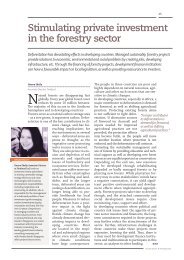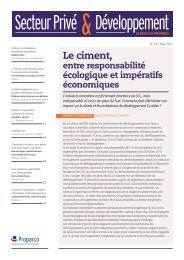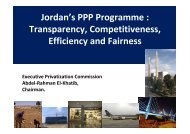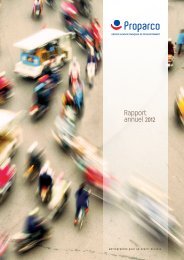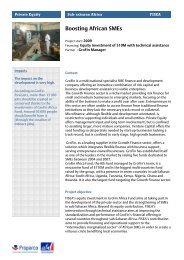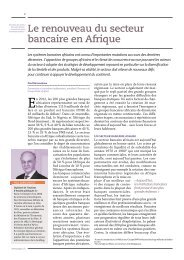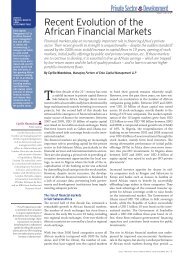Integrating Poor Populations in South African Cities - Agence ...
Integrating Poor Populations in South African Cities - Agence ...
Integrating Poor Populations in South African Cities - Agence ...
Create successful ePaper yourself
Turn your PDF publications into a flip-book with our unique Google optimized e-Paper software.
8. The Limits of the Government’s Actions<br />
8.2. The Obstacles Responsible for this Sectoral Approach<br />
Two pr<strong>in</strong>cipal reasons seem to expla<strong>in</strong> the approach based on the hous<strong>in</strong>g sector.<br />
8.2.1. A Well-Ensconced Catch-Up Policy<br />
The hous<strong>in</strong>g policy represents one of the foundations of the post-apartheid<br />
government’s catch-up policy for low-<strong>in</strong>come populations. The massive development<br />
of small, s<strong>in</strong>gle-family homes is a strong symbol, one that has been embraced and<br />
demanded by populations. The Department of Hous<strong>in</strong>g f<strong>in</strong>ds it difficult to exit this<br />
s<strong>in</strong>gle-product schema, and is attempt<strong>in</strong>g to diversify it and overcome its fail<strong>in</strong>gs<br />
without for all that really challeng<strong>in</strong>g it.<br />
8.2.2. A Facilitator Government<br />
More generally speak<strong>in</strong>g, the government of <strong>South</strong> Africa poses as a facilitator<br />
government, propos<strong>in</strong>g action for poor populations but not <strong>in</strong>terven<strong>in</strong>g any further <strong>in</strong> the<br />
production of urban space. The neo-liberal discourse results <strong>in</strong> part from the<br />
compromises made by the ANC at the end of apartheid, and aims to keep <strong>in</strong>vestors from<br />
flee<strong>in</strong>g and gives them a great degree of autonomy. The government of <strong>South</strong> Africa thus<br />
contents itself with provid<strong>in</strong>g services to poor populations but <strong>in</strong> no case seeks to control<br />
or utilize the private sector to create functionally and socially diverse liv<strong>in</strong>g spaces.<br />
116<br />
8.3. Territory-Based Reason<strong>in</strong>g Difficult to Implement<br />
Another h<strong>in</strong>drance to the design of <strong>in</strong>tegrated settlements <strong>in</strong> the urban landscape<br />
for low-<strong>in</strong>come populations can be seen <strong>in</strong> the difficulty of favour<strong>in</strong>g, identify<strong>in</strong>g and<br />
develop<strong>in</strong>g one settlement over another. This rejection of territorialization comes<br />
<strong>in</strong> large part from the history of apartheid, which consisted precisely of favour<strong>in</strong>g certa<strong>in</strong><br />
areas and penaliz<strong>in</strong>g other settlements reserved for non-white populations.<br />
8.3.1. The Lack of Plann<strong>in</strong>g<br />
This desire to avoid favour<strong>in</strong>g certa<strong>in</strong> territories over others shows through <strong>in</strong> how<br />
difficult it has been for plann<strong>in</strong>g to re-emerge <strong>in</strong> public policies. The desire to let the market<br />
<strong>Integrat<strong>in</strong>g</strong> <strong>Poor</strong> <strong>Populations</strong> <strong>in</strong> <strong>South</strong> <strong>African</strong> <strong>Cities</strong> © AFD 2009



